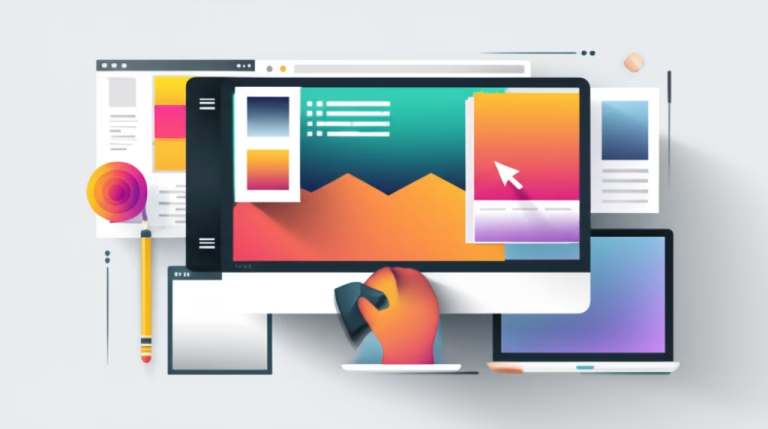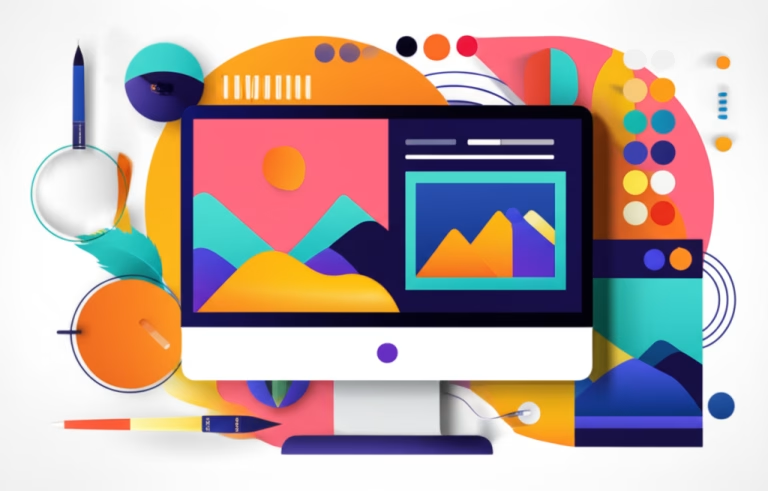Why a Portfolio is Fundamental in Design?
Starting out in design can feel overwhelming. You’re learning new skills, exploring different styles, and creating exciting projects. But how do you show the world what you can do?
This is where a design portfolio becomes your absolute best friend. It’s more than just a collection of images; it’s your professional identity. Think of it as your visual resume, a way to prove your abilities without needing years of experience listed on paper.
Potential clients or employers want to see your talent in action. Your portfolio makes that possible, opening doors to opportunities. Without one, explaining your skills feels abstract. With it, you have concrete examples that speak volumes about your creativity and technical know-how.
A strong portfolio builds trust. It shows you are serious about your craft and capable of delivering quality work. Mastering the art of building and presenting your creative portfolio is a key step in your design journey.
In this guide, we’ll explore exactly what a portfolio is and why it’s non-negotiable for aspiring designers. You’ll learn its core components, common pitfalls to avoid, and a simple process to start building yours today. Get ready to turn your projects into powerful tools for success in the design world.
Table of Contents
What Exactly is a Design Portfolio?
At its heart, a design portfolio is a curated collection of your best design work.
It’s not just a dump of every project you’ve ever touched. Instead, it’s a thoughtful selection designed to showcase your skills and style to a specific audience. Imagine a chef’s tasting menu. They don’t serve you everything they know how to cook. They choose a few signature dishes that highlight their expertise, creativity, and range.
Your portfolio is similar. You select your signature design projects that best represent the kind of work you want to do. It could include logos, websites, illustrations, branding projects, app designs, or anything else you create.
The key is presentation. Each piece should be displayed clearly, often with context about the project’s goals and your role. A good portfolio tells a story about you as a designer. It shows your process, your problem-solving skills, and your unique perspective.
It’s your professional gallery, always ready to impress potential employers, clients, or collaborators.
The Essential Pillars of a Design Portfolio
- Showcase Skills: Your portfolio is the primary way to visually demonstrate your design abilities. It lets people see your mastery of tools, understanding of principles like layout and color, and your specific design style.
- Prove Experience: Even if it’s personal work or concept projects, a portfolio shows you’ve put theory into practice. It provides tangible proof of your capability to complete design tasks and projects.
- Attract Clients/Jobs: This is often the main goal. A compelling portfolio makes a strong first impression, convincing potential employers or clients that you are the right person for the job or project.
- Tell Your Story: Beyond just images, your portfolio allows you to explain your process, the challenges you faced, and the thinking behind your design decisions. This humanizes your work and shows your problem-solving approach.
Mistakes That Can Ruin Your Portfolio
Even with great work, certain errors can make your portfolio less effective. Knowing these common traps helps you create a stronger, more professional presentation.
Avoiding these pitfalls ensures your talent shines through without unnecessary distractions or confusion.
Here are some common missteps and how to steer clear of them.
- Including Everything You’ve Ever Made
Problem: Showing every single project, including early or weaker pieces, dilutes the overall quality and makes your portfolio look inconsistent. It’s like a chef putting their practice dishes on the tasting menu.
Solution: Be selective. Curate only your strongest, most polished, and most relevant work. Aim for quality over quantity. - Lack of Context or Explanation
Problem: Displaying images without explaining the project’s purpose, your role, the challenges, or the outcome leaves viewers guessing. They don’t understand the problem your design solved.
Solution: For each project, include a brief description. Explain the client (or purpose), the project goals, your specific contributions, and what you learned or achieved. Show your thinking, not just the final image. - Making It Hard to Find or Navigate
Problem: If your portfolio website is slow, confusing, or difficult to find online, potential clients or employers will likely give up before seeing your work. Poor presentation reflects poorly on your design skills.
Solution: Choose an easy-to-use online platform (like Behance, Dribbble, or your own simple website). Ensure it loads quickly, is mobile-friendly, and has clear navigation. Make sure your contact information is easy to find.
Step by Step: Building Your Design Portfolio
Ready to create your essential design showcase? Building a portfolio is a process that evolves as you do, but here are the fundamental steps to get you started.
Even if you feel you don’t have enough “professional” work yet, you can begin today.
- Step 1 – Define Your Goal and Audience:
Before selecting projects, think about what kind of design work you want to attract. Are you aiming for branding projects, web design jobs, illustration gigs? Who are you trying to reach – agencies, small businesses, individuals? Understanding your goal helps you tailor your selection and presentation. For example, if you want web design jobs, focus on showing responsive website projects. If you want illustration work, fill it with diverse illustrations. - Step 2 – Select Your Strongest and Most Relevant Work:
Gather all your design projects – client work, personal projects, school assignments, concepts, even mock-ups. Now, be critical. Choose the pieces that best demonstrate your skills, align with your goal from Step 1, and show your unique style. Aim for 5-10 solid projects to start. It’s better to have a few excellent pieces than many mediocre ones. Ensure the work is high-quality and well-finished. - Step 3 – Add Context and Tell Each Project’s Story:
For each selected project, write a brief description. This isn’t just a caption; it’s a narrative. Explain the project’s background, the problem you were trying to solve, the challenges you encountered, and your specific role in the project. Describe your process – did you sketch first? Research? Show early iterations if relevant. Highlight the outcome or impact of the design. This context elevates your work from just an image to a demonstration of your design thinking. - Step 4 – Choose a Platform and Publish Your Portfolio:
You need a place to host your portfolio online so people can easily access it. Popular platforms for designers include Behance, Dribbble, and Adobe Portfolio. You can also build your own simple website using platforms like WordPress, Squarespace, or Wix. Choose a platform that makes your work look good and is easy to navigate. Upload your high-quality images, add your project descriptions, include your contact information, and make it live! Share the link on your social media and resume.
Frequently Asked Questions about Portfolios
Building a portfolio can bring up questions, especially when you’re just starting. Here are some common doubts cleared up.
Don’t let uncertainty stop you from showcasing your talent.
Q: How many projects should I include in my first portfolio?
A: Start with 5 to 10 of your absolute strongest projects. Quality is much more important than quantity when you are beginning.
Q: What if I don’t have any professional client projects yet?
A: That’s perfectly fine! Use personal projects, concepts, work for friends or family, or even re-design existing brands or websites as practice pieces.
Q: Should I update my portfolio after I build it?
A: Absolutely! Your portfolio should be a living document. Regularly add your latest and best work, remove older or weaker pieces, and refine project descriptions as you grow.
Conclusion: Your Portfolio in Practice
Building a design portfolio isn’t just a task on a checklist; it’s a vital investment in your design career.
It’s your most powerful tool for communicating your skills, proving your capability, and attracting the opportunities you desire. We’ve seen that it’s your visual story, supported by essential pillars like showcasing skills and proving experience.
By avoiding common mistakes like overcrowding it or lacking context, you ensure your work is seen and understood. Following a simple step-by-step process, from defining your goals to publishing online, makes the task manageable.
Remember, your portfolio is unique to you. It reflects your journey, your style, and your aspirations.
Don’t wait until you feel “ready” or have “perfect” projects. Start building it now with the work you have. It will evolve with you. Your portfolio is the bridge between your creative potential and real-world design success. Take the first step today.



